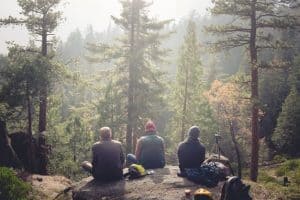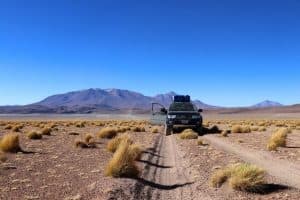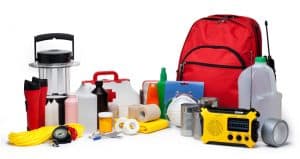If you are a lover of the great outdoors, then an emergency survival kit should be a top priority. Also, everyday life is very uncertain, you never know when something will go wrong placing yourself in harm’s way. This is especially true when you are in an outdoor environment far from the comforts of home. Not only should you be prepared for a situation when in the outdoors; there could also be an emergency that happens when you are home. An emergency such as a natural disaster, an earthquake, wildfire, flood, tornado, or hurricane. Anyone of these events can spark danger and spell disaster for you and your family should you not be prepared.
You can prevent a tragic situation if you have a well-stocked kit filled with items for an emergency situation. This article is meant to ensure you have everything you will need should an unimaginable circumstance take place.
Table of Contents
How to plan your emergency survival kit
When planning how to build an emergency survival kit there are a couple of things to ask yourself about it:
- Who will the kit be for?
- What type of emergency will possibly affect me and my loved ones?
Once you have answered these questions, you need to figure out how many people and pets this kit will be for. Does anyone have any special needs that need to be addressed when forming this kit? There are a lot of different items that a single, young, healthy adult requires in comparison to what a family or older person needs.
When you figured out who the kit will be for, you need to think about the type of emergency–where you live. If you live in California, you want to be prepared for wildfires or earthquakes–or both. If you live in the southern coastal regions–such as Florida, you will want to prepare for hurricanes and the possibility of a flood. There is also the chance of tornadoes in certain regions that you would have to prepare for.
This leads us to another question: “Where are you going to seek refuge during the emergency?” Do you have a storm shelter such as a basement to stay in during a tornado? Or will you be required to evacuate and temporarily live somewhere else until the emergency passes?
These are all things to take into consideration when preparing a kit that will aid in your surviving an emergency. You might want to think about making your survival kit one that is
portable in the case of an evacuation. It is also a good idea to have a smaller kit for your car or office, should an emergency occur while on the road or at work.
Things to pack for an emergency
This next section will cover the basic items you need to pack to be prepared for an emergency situation.
Water is probably the most essential item in an emergency kit. It is the necessary element we all need to sustain life. A variety of natural disasters–earthquakes, fire, and flood to name a few– can cause contamination to water.
When packing water, you need at least one gallon per person per day (this is for drinking, bathing, and sanitation). The storage of water is done one of two ways–purchasing purified water at the grocery store is one way. The other way is to fill empty soda or juice containers with tap water.
It isn’t a bad idea to pack more than a gallon of water if you are making a kit for traveling or evacuation purposes. It is also important to pack a straw for filtering the water with.
Food is the next important item we need to live. It is imperative to ensure we have enough of in the event of an emergency situation. Often in the case of a natural disaster, the food supply is cut short. An emergency can cause restaurants and grocery stores to be closed.
When packing survival food for your emergency kit, you should think of simplicity. Pack foods that are easy to pre-made and snack type. Foods such as:
- Beef jerky
- Nuts
- Energy bars
- Dried fruits
When setting up your family’s emergency kit, ensure you are packing food your family likes. There isn’t anything worse than being in a stressful situation and having to eat food that is unappetizing. Also, think about your pets and babies or small children. Don’t forget to have a supply of snacks for the little ones and furry pals in your life.
You can also plan for some hot meals as well by packing some canned foods, (just don’t forget a manual can opener). There are also freeze-dried pouches and food ration bars you can pick up at the local military supply store.
**Note: It is a good idea to rotate the food in your emergency kit to keep everything fresh. One way to do this is to check your supply once a year– the start of daylight savings time is a good guideline.
Emergency Communication
Whenever a situation turns into an emergency communication is very important. Normally, we depend on our cell phones, the news or the radio to get important information. However, a severe emergency situation can interfere with these communication sources.
For this reason, you should include an NOAA Weather radio in your emergency survival kit. This type of radio keeps you alerted to update in regards to evacuations, weather, and any other imperative information.
Illumination
In addition, you should include some form of illumination for each member of your family. LED lights are recommendable because they can be plugged into the wall outlet. Should the power go out, they remain illuminated, similarly to a night light. They keep the room lit up so you are not feeling lost in a dark room.
Other Essential Items
Besides the above essential articles you should also include the following basic items in your survival kit:
- You should have some basic tools, such as a pair of pliers and a multi-tool device similar to a Swiss Army Knife.
- A flashlight and extra batteries is good to provide light should there be no electricity. You should also have a stock supply of storm candles.
- Tablets for purifying your stored water as well as any water supply become contaminated.
- Duct tape
- At least 100 feet of fishing line
- 200 feet of paracord
You will need to have supplies for starting a fire–this is important for heating and cooking should there be no gas or electricity. Things you need to pack for this fire-starting kit includes:
- A magnesium fire starter and flint
- Matches or a butane lighter
- Some tinder for an emergency
- A magnifying glass
- Cooking pots and drinking mugs made of metal
Should you have to venture out in search of help you will need a few of the following items to keep you warm:
- You also need to pack an emergency poncho and/or space blanket
- Walking sticks to help in the case of leg injuries
- A big tarp to use for a tent or place to lay the injured on
- Hand-held radio device
First Aid
When a natural disaster occurs, there is the, unfortunately, chance someone you love may be injured. If this should happen, you are going to need something in your emergency kit to patch them up. The first aid supplies you include in your emergency kit can be of assistance until you can get to a medical facility.
Some of the first aid items to include in your kit:
- Various sizes of bandages
- Gauze and first aid tape
- Antibiotic ointment
- A good set of tweezers
- Tourniquets (only use in a life or death situation)
- Medicine to combat allergies or allergic reactions
- Cream for burns
- Elastic bandages
- Splinting material
- You should also include any spare prescription medications in your kit–i.e.; inhalers, pain killers, and even nitroglycerin
- Flares to attract attention if you are lost or trapped
- A whistle
**Note: Make sure to put name tags on everything so that in the event of an emergency you can figure what important medication belongs to who. Also, store medication in waterproof containers, especially any tape.
Clothing, bedding, and shelter
We have covered what you need to pack to eat; how to keep hydrated and be able to see and stay informed. Also, how to make sure everyone is safe and healthy until help arrives. It may be a while until help does arrive so you need to make sure everyone is as warm and comfortable as possible. This takes us to the next section of your kit. That is shelter, bedding, and clothing.
Some of the items you will need to pack for this section includes:
- Extra blankets, sheets, and sleeping bags
- An extra set of clothing for everyone
- Jackets, caps, and thermals for cold weather
- A large tent
All of the supplies listed in this article should be stored in totes in your basement, garage, or vehicle. They should be marked “EMERGENCY SURVIVAL SUPPLIES” so that in the event of an emergency you can find them easily.
The number one thing to remember during an emergency is to remain as calm as possible. You do not want to alert the children or set anyone into a fit of panic. If you are prepared as this article instructs, you and your family should be safe and warm while you wait for the disaster to pass or for help to arrive.
Sources:
- Safewise.com, Kits 101: How to Be Prepared for Anything
- Montemlife.com, How to make a Survival Kit
- EnergyProfessionals.com, Power Outages on the Rise in the US
- EmergencyPlanGuide.org, Best Emergency Lanterns for Power Outage
- The New York Times, How to Pack an Emergency Kit for Any Disaster




